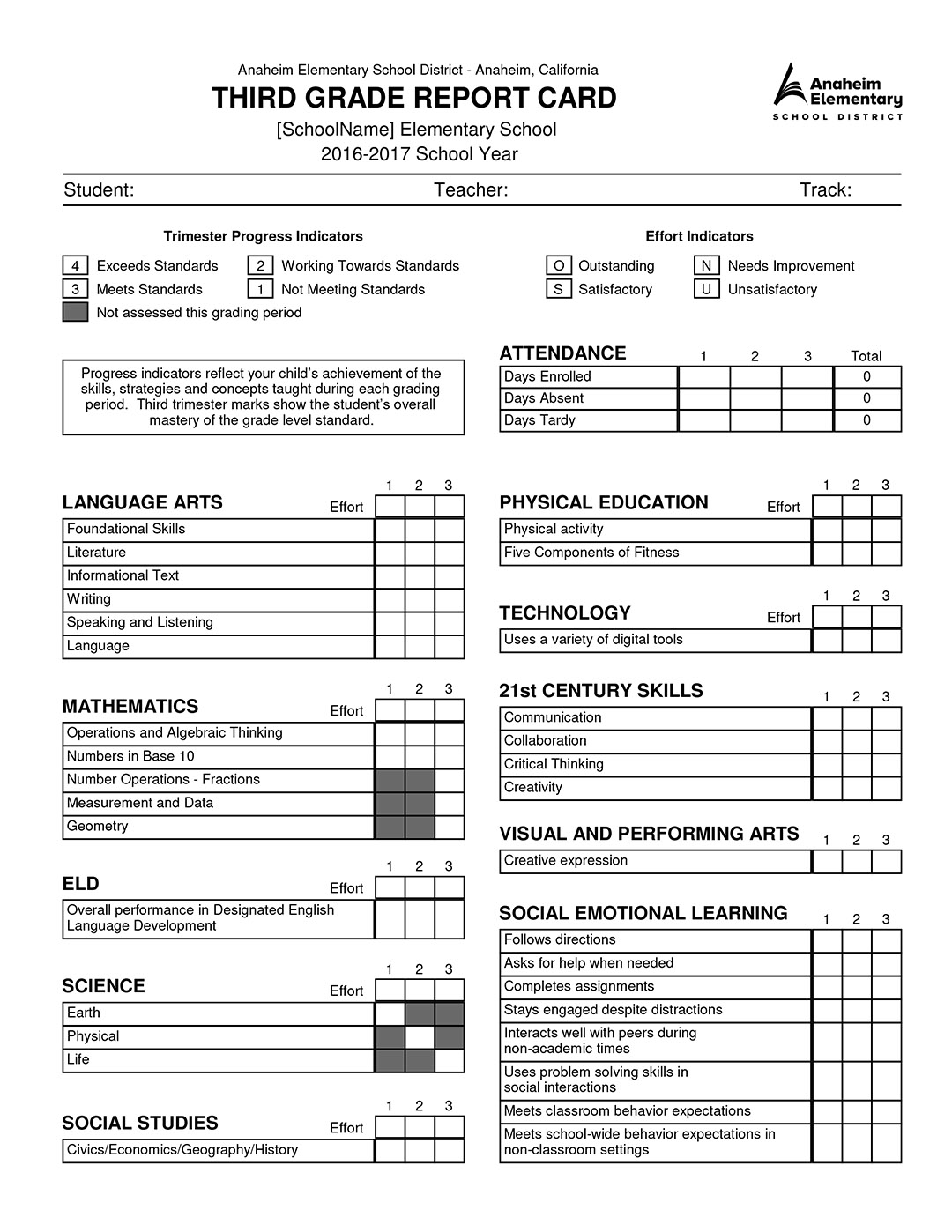Understanding AESD Report Cards
Common Core State Standards
In order to communicate what a student knows and is able to do, the language of the Common Core State Standards (CCSS) is used on the report card. Adopted by the California State Board of Education in 2010, the CCSS establish consistent guidelines from kindergarten to twelfth grade. The CCSS focus on developing the critical thinking, problem solving, and analytical skills students will need throughout their lives. They also provide a way for teachers to measure student progress throughout the school year.
This information, when shared with parents, helps communicate consistent learning goals for each student. Research shows that when parents play an active role in their child’s learning, specifically by helping demonstrate high expectations and fostering confidence in students, achievement is positively impacted. For more information regarding CCSS, visit the Core Standards Parent Should Know Guide

Trimester Progress Indicators

An indicator of 4-Exceeds Standards indicates student work consistently exceeds grade-level expectations for the reporting period as demonstrated by in-depth understanding and application.
An indicator of 3-Meets Standards indicates students work consistently and independently meets grade-level expectations.
An indicator of 2-Working Toward Standards indicates student work occasionally meets grade-level expectations but improvement is needed.
An indicator of 1-Not Meeting Standards indicates student work rarely meets grade-level expectations and significant improvement is needed in order to meet standards by the end of the year.
Strand and Domain Level Reporting
There are roughly 70 individual Language Arts and Mathematics standards at each grade level. Language Arts CCSS are organized into categories or strands. Mathematics CCSS are organized into groups called domains. AESD’s report cards communicate student mastery at the strand or domain level, not at the individual standard level. To read which standards apply to each strand or domain, visit the Core Standards State Standards for your state.

Interpreting Progress Indicators
The trimester progress indicators describe the level of mastery as well as the confidence or independence with which the student performs tasks that align to the domains or strands. This combination of descriptors and progress indicators tells parents what a child can do and to what degree.
It is important to note that a progress indicator of 3-Meets Standards is the expected goal for students. It indicates a student is meeting the requirements of the academic standards for his or her grade level during that grading period.
Both 4-Exceeds Standards and 3-Meets Standards signify that student performance is meeting grade-level expectations. The difference is the level of application and independence the student consistently demonstrates.
Progress indicators 2-Working Towards Standards and 1-Not Meeting Standards both indicate student performance is not meeting grade-level expectations during that grading period and require a dialogue with the teacher.

